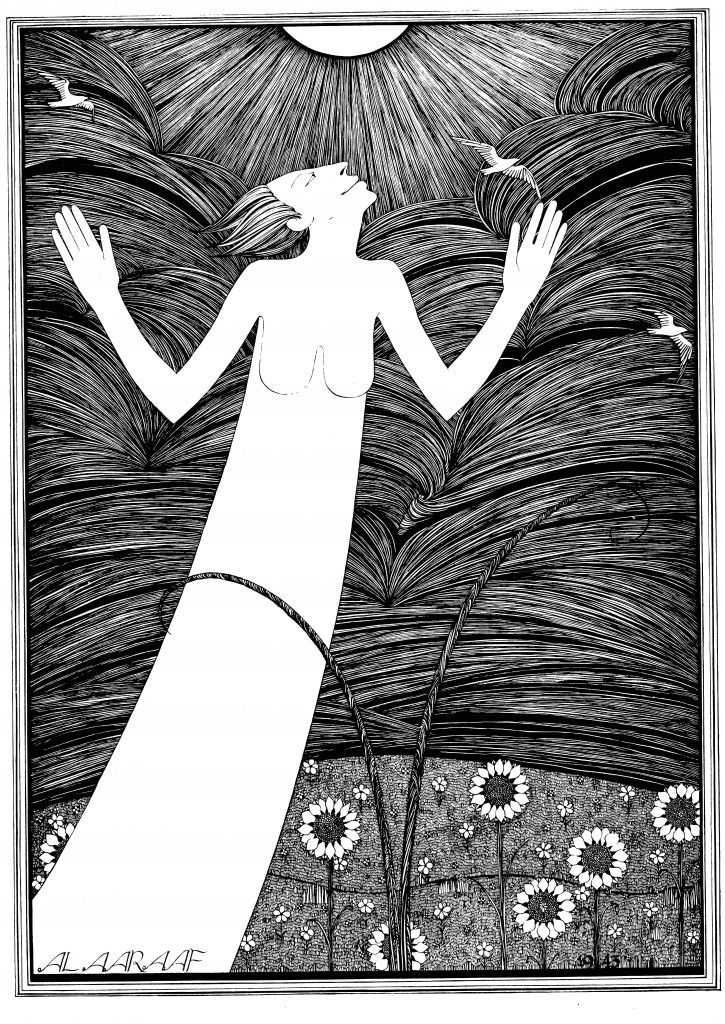Sun was drawn by Hannah Frank in 1943 and exhibited at the Royal Glasgow Institute in 1945 and is an example of Frank’s visual exploration of relationships between female figures and nature.
Sun was drawn in Frank’s third subdivision of her artistic style. This period of her artistic career is thought to have been influenced by her marriage to Lionel Levy in 1939. From this point onwards, her pen and ink drawings became brighter as Frank began to favour using white as the predominant colour within her works, where she used to prefer using black. Exemplifying this mature style, this drawing is filled with light and thus gives an impression of joy.
The viewer’s eye is first drawn to the only figure present in the composition, who emerges from the bottom left of the pictorial frame and rises towards the centre of the drawing. This female figure is depicted as an elongated form and is presented in white with no nuances or shading. However, her breasts are clearly shaped and are the only sign of the figure’s gender as her face does not display any stereotypically gendered aspects.
Her face looks up towards the sky, or rather to the sun depicted directly above her. With a smiling expression, she raises her arms and hands, slightly away from her body, as if praising the sun as if it was a divine entity. The figure stands on a very detailed field of grass and flowers. On this field, right after the figure, stand sunflowers – a clear allusion to the theme of the drawing, the sun, and more precisely what appears to be a celebration of its light.
The background is covered with multitudes of thin lines that form irregular curves and create a strong sense of movement within the piece. At some points in the drawings, those lines are entwined, which could be Frank’s attempt at representing the abstract strength and movement of the wind. The hair of the woman adds to this interpretation as it floats in the air, as if blown by the wind. Furthermore, three birds are flying in the background, adding to the feeling of movement. However, the sunflowers in the foreground stand straight and do not seem to be affected by what is going on in the background.
Above this mass of curved lines representing the wind or the clouds, the sun appears. Half of its circle is depicted at the very top and at the centre of the drawing, with the other half presumably evident beyond the frame of the image. The sun radiates rays drawn with very thin and straight lines, covering the space of the sky that is not already taken by the clouds. It appears as if light is trying to break through the clouds and, consequently, illuminates the whole scene. This interpretation seems to justify the posture of the woman, thankful for the sun bringing light into a gloomy day.
